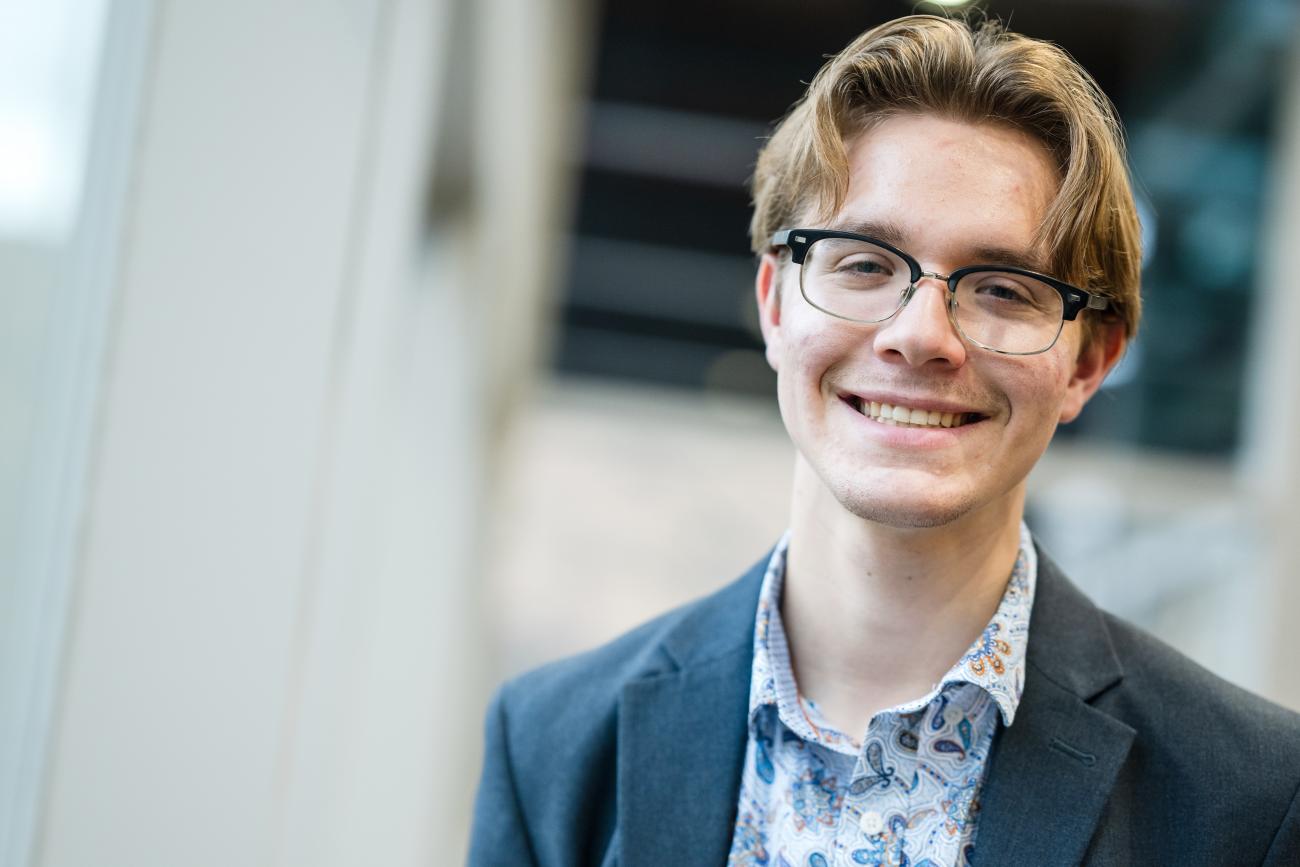Preserving a Sandstone Heritage
A trip to Jordan brings insight into archaeology
Niko Jones ’24, a double anthropology and political science major, chose Lehigh because of the great study abroad and research opportunities it promoted. He wanted to make sure he could travel while getting his education and take advantage of firsthand international experiences made available to him.
He accomplished that goal last summer during a research project involving sandstone preservation in Petra, the ancient city in present-day Jordan. The project was sponsored by Sela, an organization that specializes in the conservation and cultural resource management of Petra; Allison Mickel, associate professor of anthropology in the department of sociology and anthropology and director of the Global Studies program; and a Dale S. Strohl ’58 Award.
Jordan imports the majority of its archaeological preservation materials from elsewhere—mostly the United States and Italy—and is highly dependent on foreign production. Jones joined a research team interested in how the country’s conservation efforts might become more self-sufficient and how this work might become more economically and environmentally sustainable.
Sela has extensive connections with people in and around Petra, as well as people in Irbid, Jordan, where the team conducted laboratory experiments. They wanted to examine sandstone in Petra, as this is the most widely used material and most susceptible to damage.
“We ultimately decided on seven different stones, which, due to different color and makeup, provide a large representation of sandstone from Petra,” Jones says. “These stones were all out of context for at least 20 years, meaning they had not been taken from an archaeological structure or facade in that amount of time.”
The first stage of the experiments consisted of soaking six sandstone samples in six different consolidants, solutions that penetrate deeply in the rock and provide long-term stability and strength. These sandstone samples were then transported to Yarmouk University, in Irbid, for porosity via immersion tests. Three consolidants tested involved casein, a protein found in milk. Goat milk is readily available in Jordan, and the initial results focusing on casein look promising. But, Jones warns, it is far too soon to draw large conclusions whether this consolidation method can be used in Petra—or even at all.
“We all hope that this initial research will provide an important starting point for research on this topic, as virtually no research has been published on this topic so far, and casein has mostly been used as an adhesive, not a consolidant,” says Jones. “It would be amazing though if, at some point in the future, this environmentally and economically sustainable consolidation technique can be used on archaeological sites.”
Jones is now in the process of writing a scientific paper on the research and findings and hopes to publish the paper in the Journal of Archaeological Science.
After graduation, Jones is considering work in cultural resource management and/or the nonprofit field. One thing is for certain—he will always remember his Lehigh experiences and greatly encourages students to take at least one anthropology or global studies course at the university.
“Anthropology provides an important perspective that often analyzes the micro to a great extent,” Jones says. “It is an extremely diverse discipline and allows students to study biology, linguistics, culture and archaeology. Because of this, it is cross-disciplinary in nature, which is increasingly important in the world, and provides its students with a broad understanding of themselves and those around them.”

